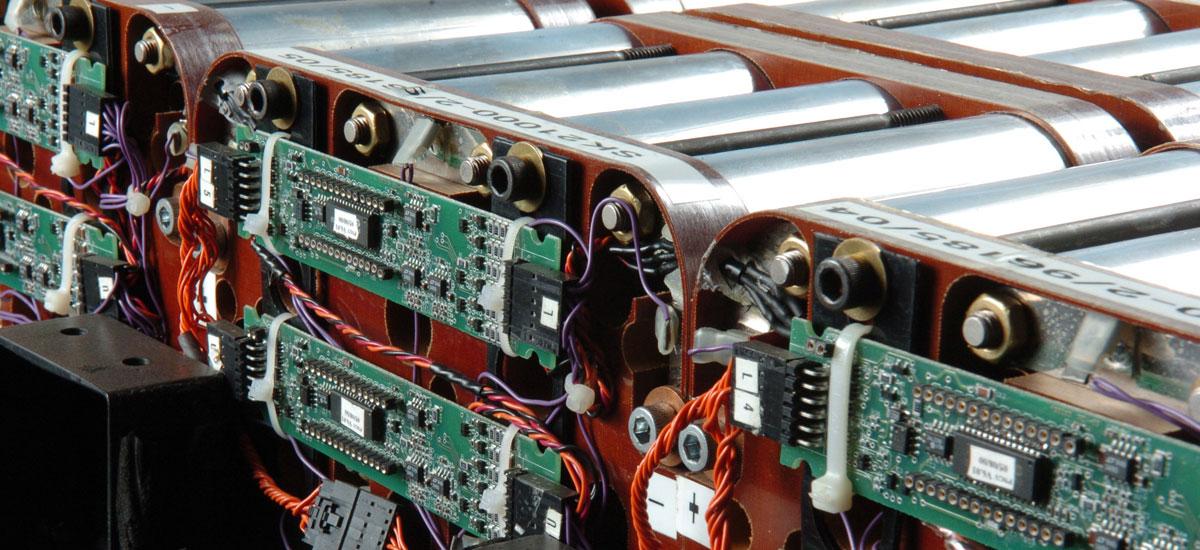Long-duration storage technology is the latest trend in energy storage for sustainable development. It has clear advantages of durability and effective use of renewable resources. These have helped in its emergence within the Cleantech hype cycle of alternative storage technology.
But what is this long-duration technology? And why do we need it?
Long-duration storage technology is an alternate way to stock energy and produce electricity. It does this via a series of mechanisms that use methods such as pumped hydroelectricity and compressed air energy storage . They capitalise on the high usage of renewable energy resources, and are vying to claim the energy storage market. This would ultimately seek to replace battery technologies, such as lithium-ions.
4 Benefits of Long-Duration Storage Technology
Long-duration technology is increasing in popularity. This is due to its many advantages over other similar methods. Some of these benefits include:
- Energy Arbitrage. Long duration storage can shift energy over longer durations depending on daily peak or off-peak load. This energy shift is especially useful as it identifies differing periods of energy use. This included low demand periods, like weekends, and high demand periods, such as weekdays. It also takes advantage of price fluctuations.
- Higher improvements in Generator Efficiency. This aspect assists in the improvement of gas generators. By adjusting their setpoint, it lowers overall fuel usage.
- Cost reduction. Long duration technology helps lower the start-up and shutdown cost of generators.
- Resiliency support. Such storage technologies are also able to establish longer periods of energy availability. This is especially helpful when supporting and managing extreme events. There is a loss of load value which affects stability during these periods. As such, resilience support from this technology can prove to be significant.

5 Successful Examples of Long-Duration Technologies
There has been a lot of talk about different types of long-duration technologies which can be of commercial success. Here are some of the most notable kinds of long-duration technology:
1. Pumped Storage Hydro Power Technology
This midcentury storage technology has experienced a recent increase in popularity. Such mechanisms store energy– most commonly in the form of water. They configure two water reservoirs to be at different heights. They then generate power when water moves through a connected turbine.
Gravity therefore plays a huge part in this pumped hydropower technology. Hydroelectric dams rely on water flowing through its turbines to create electricity for the grid. The pumped hydroelectric storage stores this energy as water within the upper reservoir. When there is a high demand for electricity, the stored water is released. The flow of stored water through a turbine then generates power. Similarly, when there is low demand, the lower reservoir uses grid power to pump water to the upper reservoir. The process then continues.
The main advantages of this technology are:
- Flexibility and Reliability: It reacts well with network fluctuations.
- Reserve Output: Continues to operate at periods of low wind and less sunshine.
- Green Battery: Is economically and commercially viable.
- Economical value: This is high due to its 82% efficiency rate.
- High lifetime: The total estimated lifetime is more than 80 years.
- Concept of sustainable energy generation: Associates renewable power with fresh water. Can also combine pumped storage with wind or solar as other sources.
Challenges:
While pumped hydro offers one solution to the problem of storage, it faces geographical constraints. Pumped hydro technology requires access to reservoirs at different altitudes. It therefore requires a specific type of terrain. Perhaps for this reason, over 75% of pumped hydro storage exists in only 10 countries globally.
2. Flow Battery Technology
To replace fossil fuels with renewable energy sources, it’s necessary to store energy. Energy needs to be available even when there’s no sun and wind, or when the demand for power exceeds the output. Flow battery technology is a potentially viable solution to this problem. This is due to its longer discharge durations.
A flow battery uses two tanks of electrolyte liquid–one positive and one negative–each separated by a cell step. This membrane keeps the positive and negative solutions separate. Ions pass through the membrane between negative and positive, which generates electricity. An electrode will then pick up electrons from within the cell stack, following the process of oxidation. This electrode travels through whatever needs power, before arriving at a counterpart on the other side of the membrane. Afterwards, the process of reduction frees the positively charged hydrogen ions. Lastly, they travel back across the membrane to maintain the charge balance.

The advantage of flow batteries are:
- Higher recharge rates
- Little to no fire hazard: They are safe and economical.
- High storage capacity: Holds over 10,000 battery cycles, with little or no loss of storage capacity
Challenges
A drawback for using flow batteries is that they need a complex equipment setup. Also, compared to other batteries, their energy densities are low.
3. Stacked Blocks Technology
Stacked blocks technology offers another option for energy storage and power generation. This technology uses robotic arms and cranes to generate and stack surplus power.
Stacked blocks technology is a process where something is lifted against gravity, and thus able store energy. This energy is later retrieved when the object falls.
There are a few reasons why stacked blocks may be superior to hydro storage. Firstly, concrete as a material is a lot denser than water. It is therefore able to store energy more effectively. Secondly, access to cranes is plentiful, and therefore doesn’t require any extra investment. For example, companies such as ABB and Siemens already have fully optimised crane use. Using stacked technology is also efficient. A round trip will conserve 85% of the power used, which is on-par with the 90% rate in lithium-ion batteries.

ENERGY VAULT is a small start-up who are investigating stacked blocks technology. They seek to replace the use of water and dams as a means of storing energy with concrete blocks and cranes. This idea came from replicating pumped hydro’s gravity storage but adapting it for greater geographic diversity. Thus, it avoids inherent limitations.
Challenges:
As a relatively new invention, stacked blocks technology is expensive. Due to this high price, investors are reluctant to use stacked blocks at present. However, this may change in future.
4. Liquid Air Storage Technology
Liquid air technology, or cryogenic energy storage, is another feasible alternative storage technology.
It works through a process known as air liquefaction. Cooled air becomes liquid at -194°C. The liquid air gets stored at a low pressure. Later, heating the air causes it to expand, which generates power.
Right now, Highview Power’s CRYOBattery is the only long-duration energy storage solution available on the market. It offers multiple gigawatt-hours of storage.
Process of Liquid Air Energy Storage
There are three main processes within the liquid air energy storage process:
- System Charge: The process starts with an air liquefier as the main charging system. Using electrical energy, it draws air from the surrounding environment. The air is then cleaned and cooled until it becomes liquified.
- Storage of energy: Here, the liquid air is stored at a low pressure within an insulated tank. This container serves as energy storage, and is deployed in the bulk storing of gases such as nitrogen or oxygen.
- Power recovery: Finally, this liquid air is pumped to a high pressure to generate power. This allows air to be evaporated and superheated, helping in the production of power and energy generation.

The advantages of these cryogenic energy storage plants are:
- Voltage control
- Grid balancing
- Synchronous inertia. This provides grid operators the flexibility to manage power and energy services independently.
Challenges:
The biggest disadvantage of liquid air storage technology is inefficiency. On a round trip, liquid air efficiency is less than 50%. This lags behind other alternative technologies such as pumped hydro (70-80%) or batteries (75-90%). Also, this technology is only suitable for large scale projects with concentrated oxygen.
5. Underground Compressed Air Storage
This technology uses underground compressed air to store energy. It’s increasing in popularity due to its ability to supplement energy usage during high periods of demand. It also improves air quality and helps to maintain the stability of a system. The method of storage itself recovers by allowing air to decompress through a turbine. This ultimately increases energy efficiency through the process of expanding heat.

The Process of Underground Compressed Air Storage
This technology can be used within the process of large-scale energy storage. In these instances, the process appears as follows:
- To store air, pressurised storage tanks or underground caverns are commonly used.
- This air is then pumped using a compressor, which is directed towards the enclosure.
- When this pressurised air expands, it gradually assists in pushing towards a retrieval of stored energy.
- Rotating the turbine generates electricity for household or commercial activities.
Challenges:
There are two major problems associated with this technology. First, compressed air heats up. Unfortunately, the warmer air is, the less that can be stored. The second problem is that releasing the compressed air reduces the pressure in the storage tank. This further reduces the amount of electricity produced.
Conclusion
This article has detailed five examples of long-duration energy storing technologies. Each one is currently increasing in popularity throughout the market. Each of these solutions provides a potential path to sustainable energy storage. This would fulfill the SDG 7 and SDG 9 sustainability goals.
For more information regarding sustainable development goals and sustainable energy, have a look at some of our other articles coming out this month. Or connect through our volunteering program. If you prefer to learn by listening, you can attend one of our upcoming webinars.
Written in conjunction with Kavya Santhosh, Gemma Grant, and Rebecca Deer.